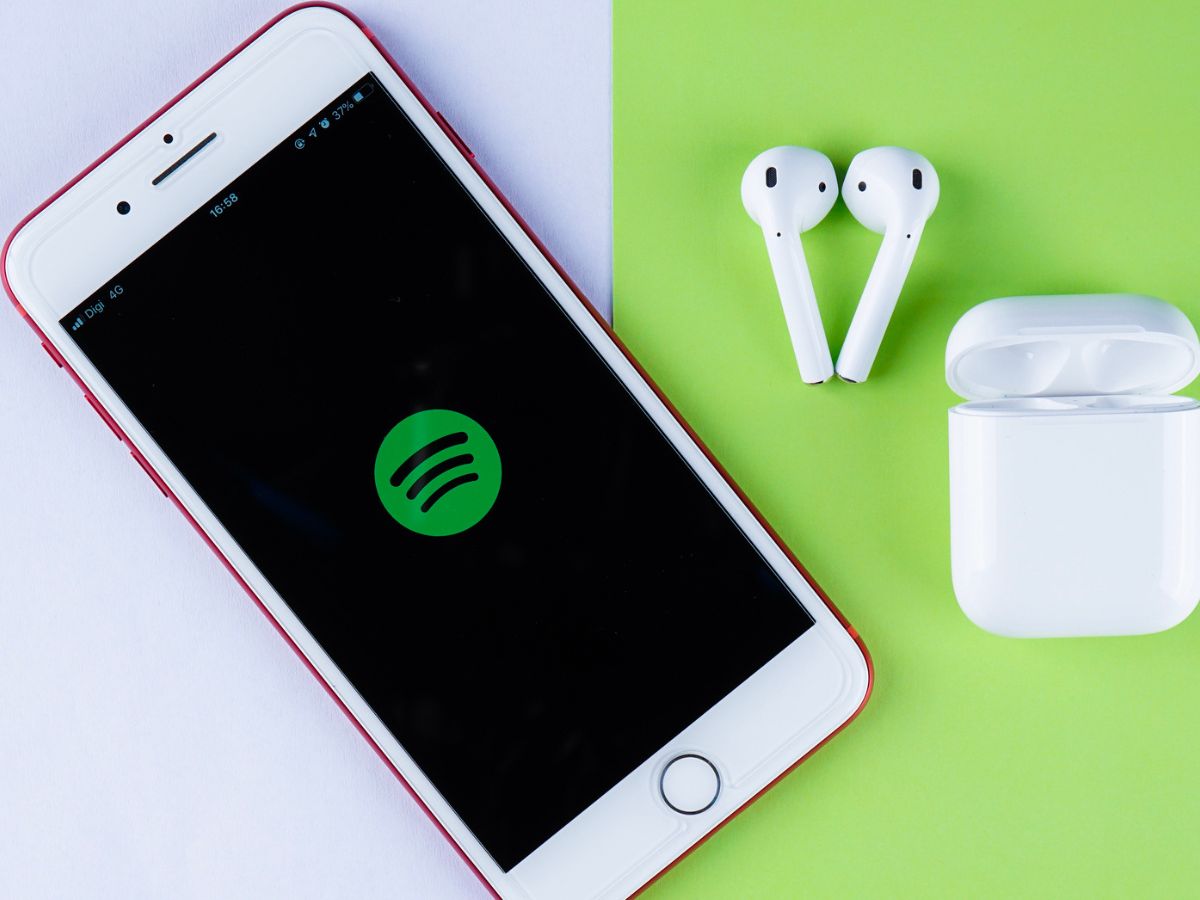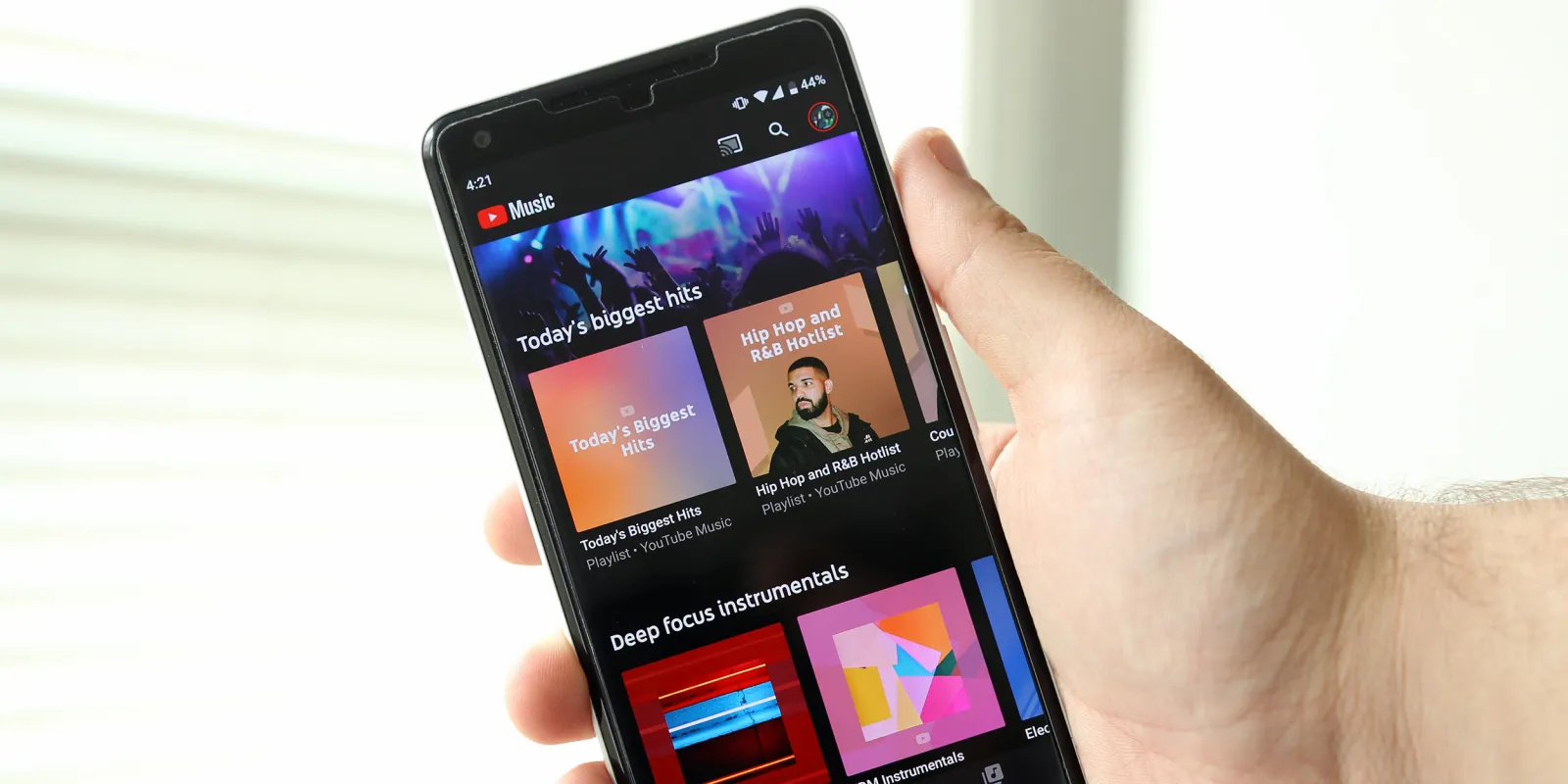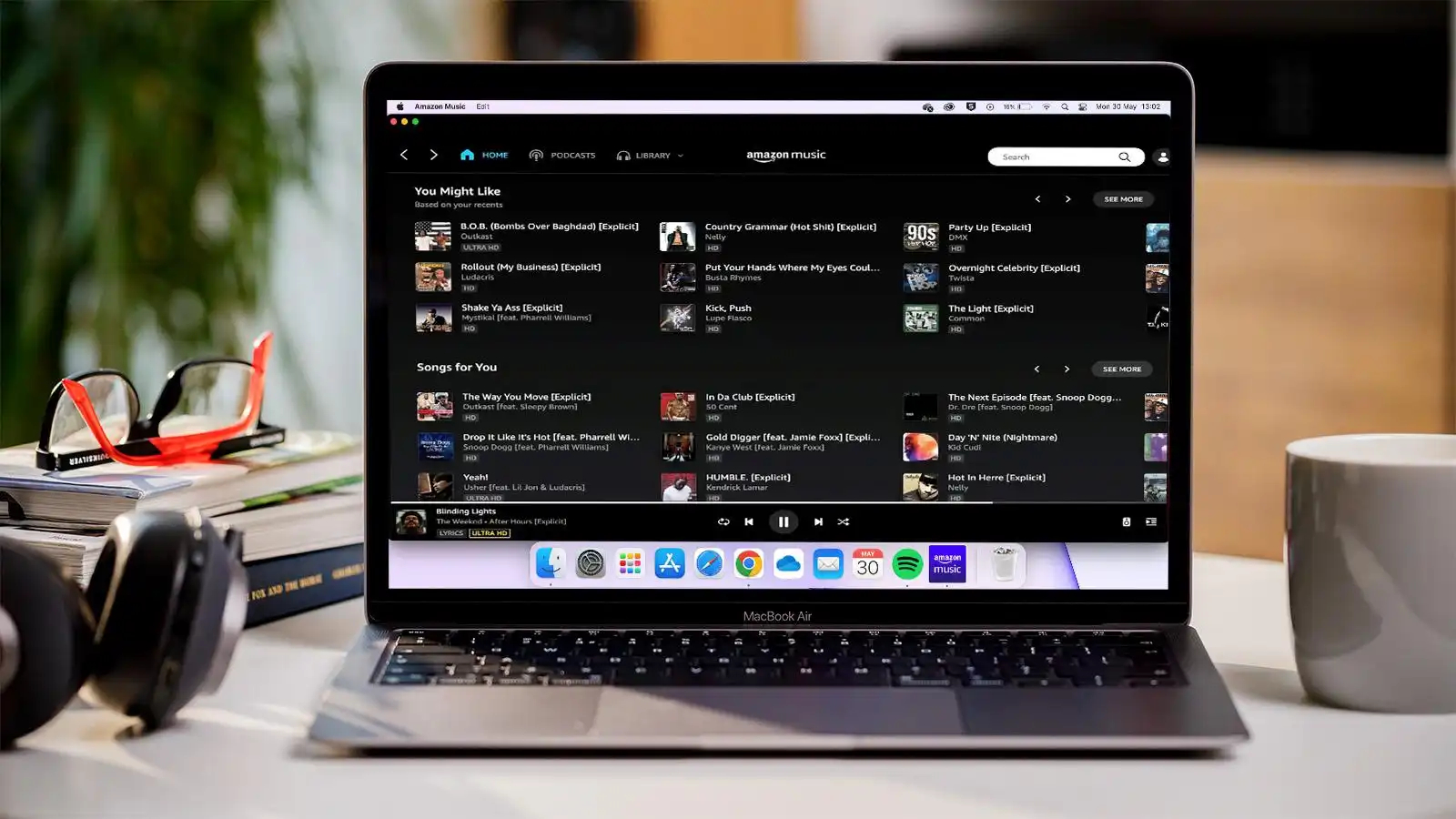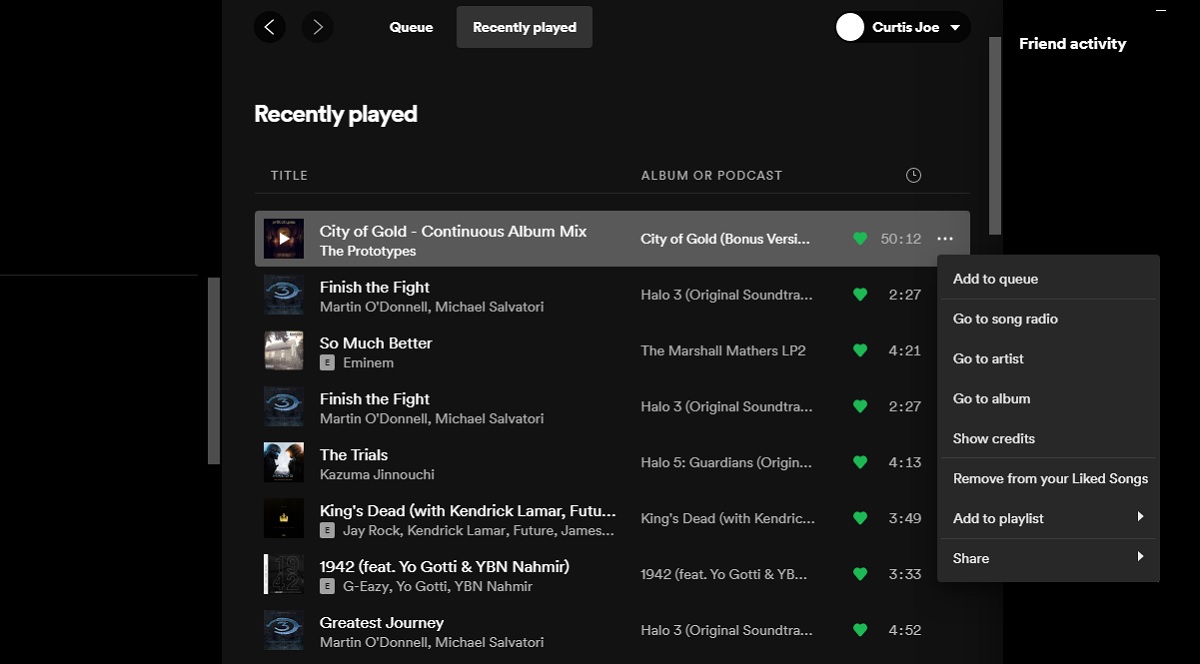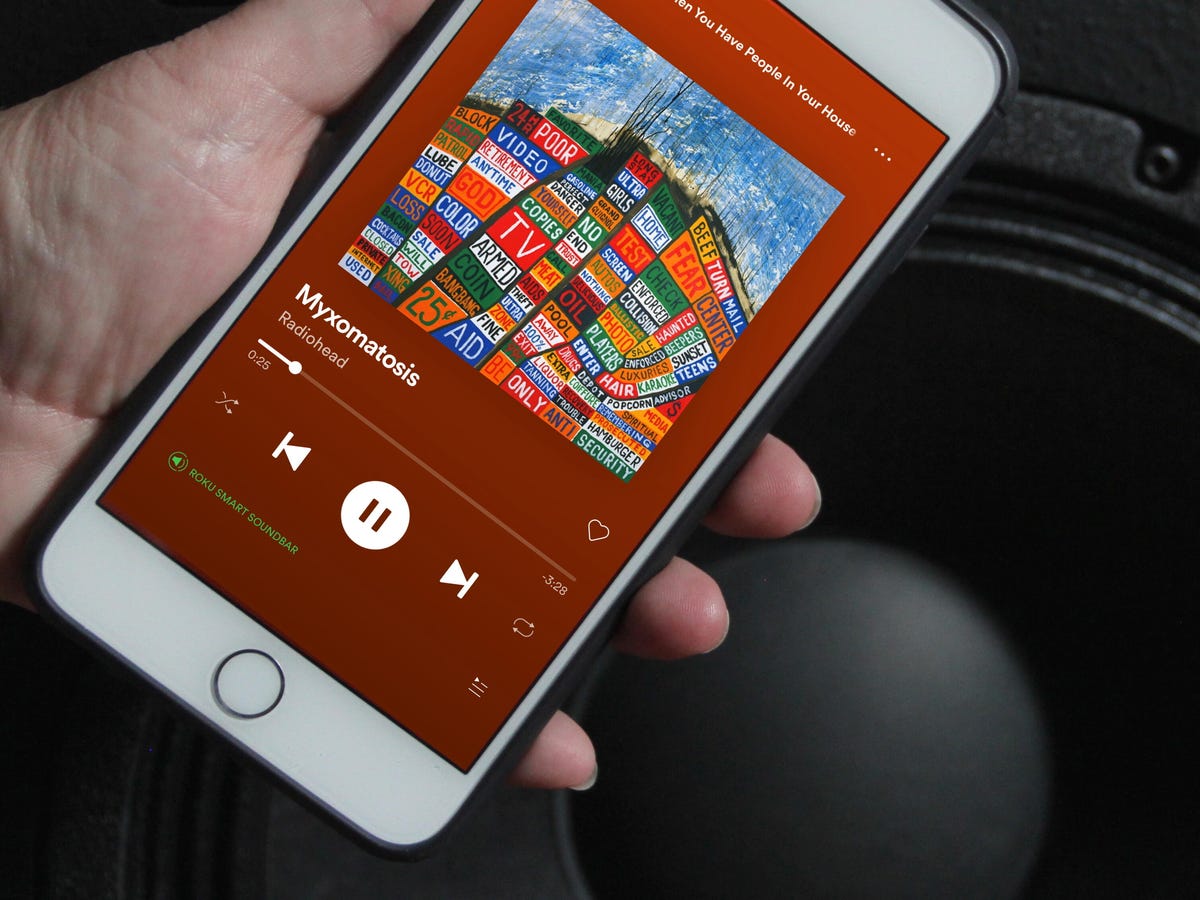Home>Devices & Equipment>Streaming>Tech: How Does Spotify Handle Music Streaming?
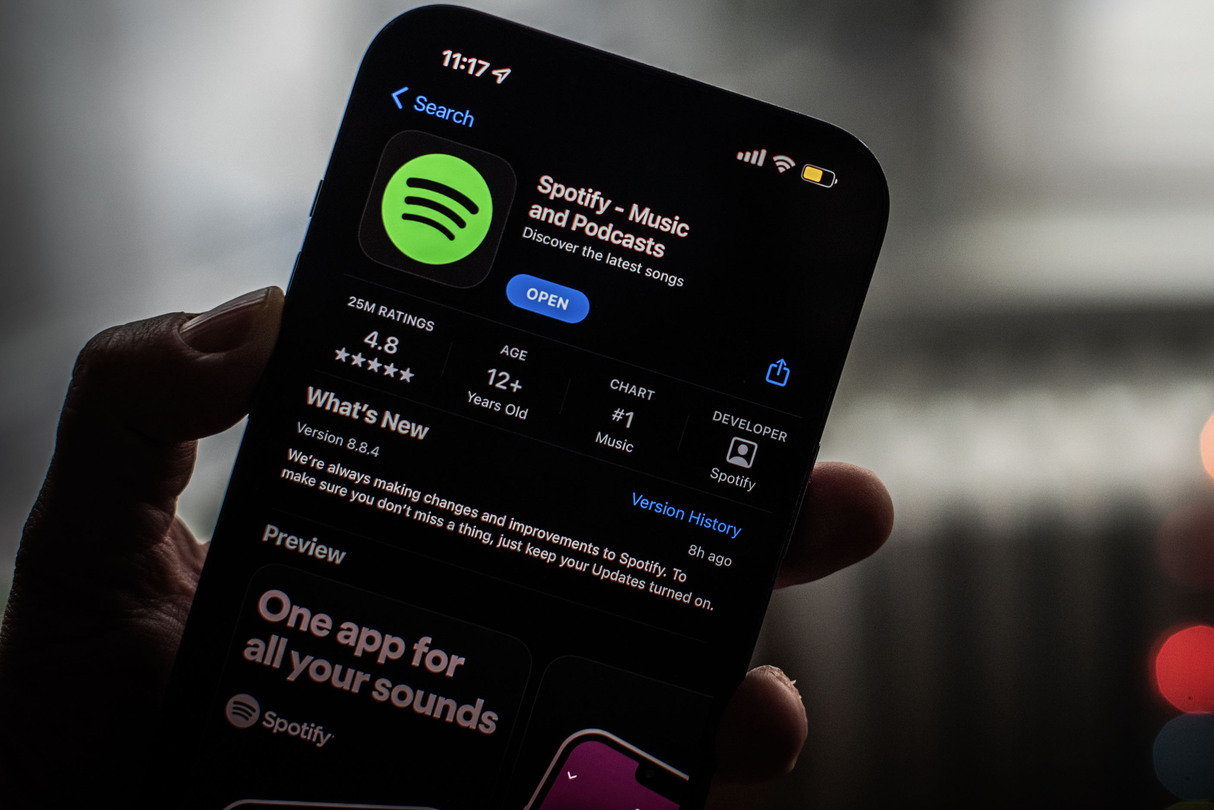

Streaming
Tech: How Does Spotify Handle Music Streaming?
Published: March 8, 2024
Learn how Spotify handles music streaming and discover the technology behind seamless audio delivery. Explore the intricacies of music streaming with Spotify.
(Many of the links in this article redirect to a specific reviewed product. Your purchase of these products through affiliate links helps to generate commission for AudioLover.com, at no extra cost. Learn more)
Table of Contents
Introduction
In today's digital age, music streaming has revolutionized the way we consume and enjoy music. With the rise of platforms like Spotify, music lovers can access an extensive library of songs, playlists, and podcasts at their fingertips. But have you ever wondered about the technology that powers this seamless music streaming experience?
Behind the scenes, Spotify employs a sophisticated infrastructure and cutting-edge technology to deliver high-quality audio content to millions of users worldwide. From data compression and content delivery networks to personalized recommendation algorithms, Spotify's approach to music streaming is a fascinating blend of innovation and efficiency.
In this article, we will delve into the intricate workings of Spotify's music streaming technology, shedding light on the mechanisms that enable users to enjoy their favorite tunes with minimal buffering and maximum convenience. By understanding the underlying technology, we can gain a deeper appreciation for the seamless music streaming experience that Spotify offers.
So, let's embark on a journey through the digital realm of music streaming, unraveling the technological marvels that power Spotify's platform and pave the way for an immersive and personalized musical journey.
The Technology Behind Spotify's Music Streaming
At the core of Spotify's music streaming service lies a sophisticated blend of cutting-edge technology and innovative solutions designed to deliver a seamless and immersive listening experience to users worldwide. From data compression and content delivery networks to personalized recommendation algorithms, Spotify's approach to music streaming is a testament to the power of technology in enhancing our musical journeys.
One of the key technologies that underpin Spotify's music streaming is data compression. By employing advanced compression algorithms, Spotify optimizes the size of audio files without compromising on sound quality. This allows for efficient streaming, reducing buffering times and ensuring a smooth playback experience for users, even on varying network conditions.
Furthermore, Spotify leverages a robust content delivery network (CDN) and a scalable server infrastructure to efficiently distribute audio content to users across the globe. The CDN ensures that music files are delivered from geographically distributed servers, minimizing latency and enhancing the overall streaming performance. This strategic infrastructure enables Spotify to cater to a vast user base while maintaining high standards of reliability and accessibility.
In addition to the technical aspects of streaming, Spotify's personalized recommendation algorithms play a pivotal role in enhancing user engagement and satisfaction. Through the analysis of user listening habits, preferences, and interactions with the platform, Spotify leverages machine learning and data-driven insights to curate personalized playlists, recommend new music, and tailor the overall listening experience to individual tastes. This personalized approach not only enriches the user experience but also fosters a deeper connection between listeners and the vast musical catalog available on the platform.
In essence, the technology behind Spotify's music streaming is a harmonious fusion of data optimization, network infrastructure, and intelligent algorithms, all working in unison to deliver a captivating and personalized audio experience to millions of users. By continually innovating and refining their technological foundations, Spotify remains at the forefront of the music streaming industry, setting new standards for quality, accessibility, and user-centric innovation.
As we unravel the intricate technology that powers Spotify's music streaming, we gain a deeper appreciation for the seamless and immersive musical journey that the platform offers. It is through the seamless integration of advanced technology and user-centric design that Spotify continues to redefine the way we experience and enjoy music in the digital age.
Data Compression and Streaming
Data compression plays a pivotal role in optimizing the efficiency of music streaming, allowing platforms like Spotify to deliver high-quality audio content while minimizing bandwidth usage and buffering times. Spotify employs advanced compression algorithms to reduce the size of audio files without compromising on sound fidelity, ensuring a seamless streaming experience for users across varying network conditions.
The process of data compression begins with the audio files being encoded using sophisticated algorithms that efficiently represent the audio data while minimizing redundant information. This results in a smaller file size without perceptible loss in audio quality. By employing industry-leading compression techniques, Spotify achieves a delicate balance between file size and audio fidelity, ensuring that users can enjoy their favorite songs without experiencing significant delays or interruptions during playback.
Furthermore, Spotify's approach to data compression extends beyond traditional audio formats, as the platform also supports high-quality streaming through formats like Ogg Vorbis and AAC. These formats are known for their efficient compression capabilities, allowing Spotify to deliver a diverse range of audio content while optimizing bandwidth usage and storage requirements.
In the context of streaming, data compression plays a crucial role in ensuring a smooth and uninterrupted playback experience for users. By reducing the size of audio files, Spotify minimizes the amount of data that needs to be transmitted during streaming, thereby mitigating potential bottlenecks and latency issues. This is particularly beneficial for users accessing the platform on mobile devices or under bandwidth-constrained conditions, as it enables seamless streaming without compromising on audio quality.
Moreover, the efficient data compression employed by Spotify aligns with the platform's commitment to accessibility and inclusivity. By optimizing the delivery of audio content, Spotify can cater to a diverse global audience, including users in regions with limited network infrastructure or constrained data plans. This democratization of music streaming underscores the transformative impact of data compression in making high-quality audio content accessible to a broad spectrum of listeners.
In essence, data compression lies at the heart of Spotify's commitment to delivering a seamless and immersive music streaming experience. By leveraging advanced compression algorithms and supporting efficient audio formats, Spotify ensures that users can indulge in their musical preferences without being hindered by buffering or data limitations. This emphasis on data optimization underscores Spotify's dedication to enhancing the accessibility and enjoyment of music for audiences worldwide.
Content Delivery Network (CDN) and Server Infrastructure
Spotify's seamless music streaming experience is made possible by a robust Content Delivery Network (CDN) and a scalable server infrastructure that work in tandem to efficiently distribute audio content to users across the globe. The strategic deployment of a CDN and a resilient server architecture forms the backbone of Spotify's ability to deliver high-quality music with minimal latency and optimal performance.
At the core of Spotify's content delivery strategy is the utilization of a geographically distributed CDN, comprising a network of servers strategically positioned in various locations worldwide. This distributed approach ensures that music files and streaming data are delivered from servers that are in close proximity to the end users, minimizing the distance over which data needs to travel. By reducing the physical distance between the servers and the users, Spotify mitigates latency and accelerates the delivery of audio content, resulting in a smoother and more responsive streaming experience.
Furthermore, Spotify's server infrastructure is designed to be highly scalable and resilient, capable of handling the demands of a vast and diverse user base. The platform's servers are equipped with advanced load balancing and redundancy mechanisms, ensuring that user requests are efficiently distributed across the server network and that potential points of failure are mitigated. This robust infrastructure enables Spotify to accommodate fluctuations in user traffic, scale resources dynamically, and maintain high standards of reliability and accessibility.
In addition to optimizing the delivery of audio content, Spotify's CDN and server infrastructure play a crucial role in enhancing the platform's global reach and accessibility. By strategically positioning servers in diverse geographical locations, Spotify can cater to users across different regions, irrespective of their proximity to traditional data centers. This inclusive approach ensures that users worldwide can access Spotify's extensive music library with minimal latency, fostering a more equitable and inclusive music streaming experience for diverse audiences.
In essence, Spotify's strategic investment in a geographically distributed CDN and a scalable server infrastructure underscores the platform's commitment to delivering a seamless and responsive music streaming experience to users worldwide. By leveraging the power of a distributed network and resilient server architecture, Spotify continues to set new benchmarks for accessibility, reliability, and performance in the realm of music streaming, enriching the lives of millions of music enthusiasts across the globe.
Personalization and Recommendation Algorithms
Personalization and recommendation algorithms form the cornerstone of Spotify's commitment to delivering a tailored and engaging music streaming experience for its users. At the heart of this approach lies a sophisticated blend of machine learning, data analysis, and user behavior insights, all working in unison to curate personalized playlists, recommend new music, and enhance the overall listening journey for each individual user.
Spotify's personalized recommendation algorithms are designed to understand and adapt to the unique musical preferences and listening habits of each user. By analyzing factors such as listening history, favorite genres, artist preferences, and user interactions with the platform, Spotify's algorithms gain valuable insights into the diverse and evolving tastes of its users. This deep understanding enables Spotify to curate personalized playlists and recommend relevant music that resonates with each user's individual preferences, fostering a deeper sense of connection and engagement with the platform.
Furthermore, Spotify leverages advanced machine learning models to continuously refine its recommendation algorithms, ensuring that users are exposed to a diverse range of music that aligns with their evolving tastes and moods. Through the seamless integration of data-driven insights and user-centric design, Spotify empowers users to discover new artists, genres, and tracks that resonate with their musical inclinations, thereby enriching their overall listening experience.
The impact of personalized recommendation algorithms extends beyond individual user engagement, as it also plays a pivotal role in promoting musical diversity and discovery. By surfacing a wide array of music that aligns with user preferences while also introducing new and lesser-known artists, Spotify fosters a vibrant ecosystem of musical exploration and appreciation. This approach not only benefits users by broadening their musical horizons but also contributes to the visibility and recognition of emerging artists and genres within the global music landscape.
In essence, Spotify's emphasis on personalization and recommendation algorithms reflects a commitment to empowering users to embark on a personalized and enriching musical journey. By harnessing the power of data-driven insights and machine learning, Spotify continues to redefine the way users discover, engage with, and immerse themselves in the world of music, fostering a deeper sense of connection and resonance with the diverse musical tapestry available on the platform.
Conclusion
In conclusion, the intricate technology that powers Spotify's music streaming platform represents a harmonious fusion of innovation, efficiency, and user-centric design. From advanced data compression techniques to a robust content delivery network and personalized recommendation algorithms, Spotify's approach to music streaming exemplifies the transformative impact of technology on the way we experience and engage with music in the digital age.
At the forefront of Spotify's technological prowess lies its commitment to delivering a seamless and immersive music streaming experience to users worldwide. The strategic implementation of data compression not only optimizes the efficiency of streaming but also ensures that high-quality audio content is accessible to a diverse global audience, transcending barriers of bandwidth limitations and network constraints. By prioritizing data optimization, Spotify empowers users to indulge in their musical preferences without being hindered by buffering or data limitations, fostering a more inclusive and accessible music streaming landscape.
Furthermore, Spotify's investment in a geographically distributed content delivery network and a scalable server infrastructure underscores its dedication to global accessibility and reliability. By strategically positioning servers and leveraging a resilient infrastructure, Spotify minimizes latency and accelerates the delivery of audio content, setting new benchmarks for performance and inclusivity in the realm of music streaming. This inclusive approach ensures that users worldwide can access Spotify's extensive music library with minimal latency, fostering a more equitable and inclusive music streaming experience for diverse audiences.
Moreover, the personalized recommendation algorithms employed by Spotify reflect a commitment to empowering users to embark on a personalized and enriching musical journey. By harnessing the power of data-driven insights and machine learning, Spotify continues to redefine the way users discover, engage with, and immerse themselves in the world of music, fostering a deeper sense of connection and resonance with the diverse musical tapestry available on the platform.
In essence, Spotify's technological prowess extends beyond the realm of streaming, shaping the way we interact with music, discover new artists, and curate personalized listening experiences. By continually innovating and refining its technological foundations, Spotify remains at the forefront of the music streaming industry, setting new standards for quality, accessibility, and user-centric innovation. As we unravel the intricate technology that powers Spotify's music streaming, we gain a deeper appreciation for the seamless and immersive musical journey that the platform offers, reinforcing its position as a trailblazer in the digital music landscape.



